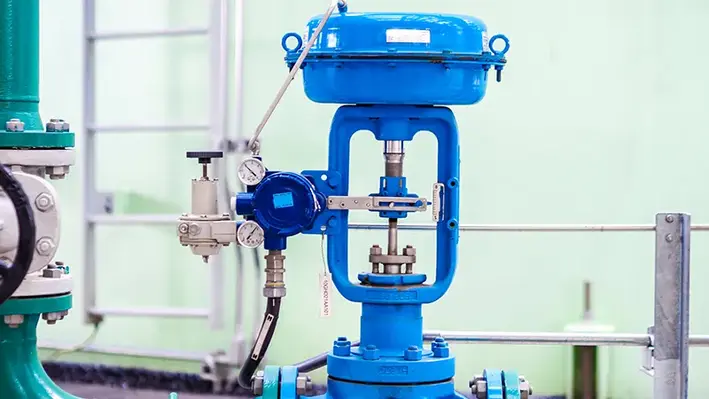
 An oil producer from the United States employed Emerson and the company's local partner, Puffer-Sweiven, to replace existing traditional actuator systems on shutdown valves at production wellheads with two Bettis RTS electric valve actuators
An oil producer from the United States employed Emerson and the company's local partner, Puffer-Sweiven, to replace existing traditional actuator systems on shutdown valves at production wellheads with two Bettis RTS electric valve actuators
Successfully pilot-tested, the solutions reduced power consumption and surge events, improved time to market (TTM) with quick implementation, and ensured data-based maintenance decisions. The FQ Series fail-safe quarter-turn actuator mounted on a ball valve, and the FL Series fail-safe linear actuator mounted on a reverse-acting gate valve. As electric actuators, these did not require air compressors, filtration and tubing.
The existing model cost the producer high maintenance charges and operational disruptions as it required addressing failures in cases of power outages or air leaks. Diaphragm wear and corrosion in the air lines raised safety issues as they needed manual intervention. Emerson's systems eliminated this step with its onboard diagnostic features to enable remote monitoring and troubleshooting, including partial valve stroke test (PVST). Equipped to achieve Safety Integrity Level 3 (SIL3), they are mechanical fail-safe to support emergency shutdown applications with the necessary response time. To deal with outage issues, the systems come with a fail-safe 24 V DC circuit, independent of the main power grid.
Capable of operating within a temperature range from -40 °F to +140 °F (-40 °C to +60 °C), it solved the problem of frozen instrument air supply lines of the traditional actuators during colder seasons.
The new systems eliminated methane emissions which were common with each stroke from the tradional actuators.
Click here to register for Offshore Network's global well intervention and decommissioning conferences.
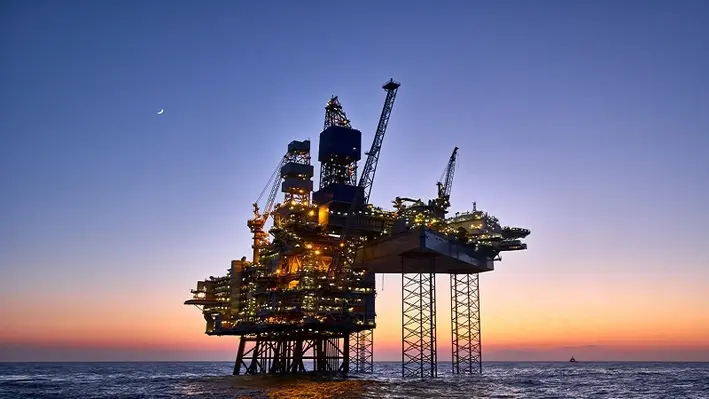
 The Department of the Interior has announced that the lead federal agency responsible for overseeing decommissioning activities within the Chumash Heritage National Marine Sanctuary will be the Bureau of Safety and Environmental Enforcement (BSEE).
The Department of the Interior has announced that the lead federal agency responsible for overseeing decommissioning activities within the Chumash Heritage National Marine Sanctuary will be the Bureau of Safety and Environmental Enforcement (BSEE).
The responsibility was transferred from the Department of Commerce to the Interior, underscoring the critical role BSEE plays in managing safe and environmentally sound offshore transitions.
The transfer followed extensive coordination between the National Oceanic and Atmospheric Administration, BSEE and the Bureau of Ocean Energy Management, ensuring a unified approach to decommissioning in the Sanctuary.
Acting Assistant Secretary for Land and Minerals Management, Adam Suess, said, “This is a strong example of interagency collaboration to streamline permitting and promote responsible energy development while honouring our commitment to environmental protection. By leveraging BSEE’s regulatory expertise, we can ensure that offshore decommissioning activities within the Sanctuary are conducted safely and efficiently.”
BSEE Principal Deputy Director, Kenneth Stevens, commented, “The announcement exemplifies our commitment to streamlining processes, reducing unnecessary regulatory burdens, and promoting energy production in alignment with strong environmental protections. Early coordination between NOAA and BSEE will ensure clarity and efficiency, establishing agreed-upon mitigation measures and providing a streamlined regulatory pathway for permittees.”
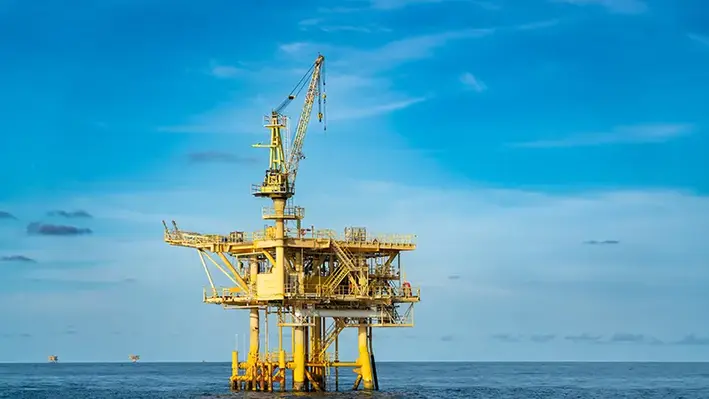

In 2025, the offshore oil and gas sector in the Gulf of America is undergoing a rapid transformation, as new well intervention technologies reshape how operators approach subsea production, integrity, and high-pressure challenges.
With legacy fields maturing and operational efficiency becoming a strategic priority, companies are turning to advanced systems and partnerships to optimise well performance, extend asset life, and reduce rig time.
Chevron’s Ballymore development stands out as a symbol of this shift. By leveraging a subsea tieback to the existing Blind Faith platform, the project avoids the need for new topside infrastructure while still enabling high-yield production from three wells. This infrastructure-light approach exemplifies a broader industry trend, as operators seek scalable, sustainable solutions that reduce capital expenditure while accelerating timelines. Ballymore is expected to contribute significantly toward Chevron’s target of producing 300,000 barrels of oil equivalent per day from the region by 2026.
On the other hand, Shell is deploying innovative materials in its Whale project, located around 200 miles offshore. The company has partnered with CRP Subsea to introduce crushable foam wrap (CFW) technology – engineered to collapse under specific temperature and pressure thresholds. This provides thermal expansion management and pressure relief in the annulus, addressing critical integrity challenges in deepwater completions. Set for phased delivery starting in the third quarter of 2025, the technology reflects growing emphasis on preemptive integrity control in complex environments.
Meanwhile, intervention hardware is also evolving to meet the region’s high-pressure demands. Trendsetter Engineering has successfully deployed its Trident 20K system at Beacon Offshore’s Shenandoah project. Designed for operations in ultra-high-pressure wells, the intervention system was installed from the Deepwater Atlas drillship and enabled a two-well flowback campaign without requiring the system to be recovered between wells. Its modular design and wet-mate capabilities allowed operators to save valuable rig time while maintaining safety in technically challenging conditions.
The Gulf of America is shifting toward a model where reliability, modularity, and pressure management dominate offshore engineering priorities. As Chevron retools infrastructure usage, Shell integrates intelligent thermal solutions, and Trendsetter pushes the limits of high-pressure intervention, the region is positioning itself as a proving ground for next-gen well intervention technologies. These advancements are expected to support longer well life cycles and safer operations as operators balance performance with cost control.

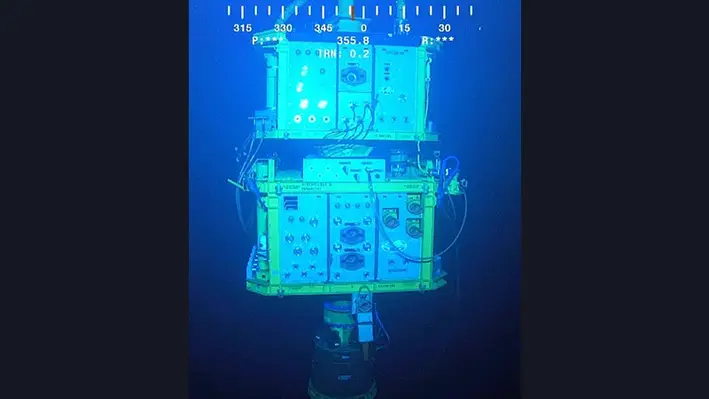 Houston-based subsea hardware and offshore service solutions, Trendsetter Engineering, has deployed for the first time its flagship Trident 20K Intervention System for Beacon Offshore Energy’s Shenandoah project in the Gulf of America
Houston-based subsea hardware and offshore service solutions, Trendsetter Engineering, has deployed for the first time its flagship Trident 20K Intervention System for Beacon Offshore Energy’s Shenandoah project in the Gulf of America
The deployment was initiated from the Deepwater Atlas for a two-well flowback operation at the Shenandoah site. The system was wet-hopped between wells, which not only helped to cut down operational costs but also several days of critical path rig time. The system is currently undergoing post-campaign maintenance by Trendsetter so that it is ready for further deployments.
The launch of the 20K Open Water Intervention Riser System (OWIRS) with its first deployment marks a milestone for Trendsetter.
The 20K intervention system enhances the company's fleet of rental intervention kits. It is the realisation of a groundbreaking innovation as it has been on the cards since the company's 2020 launch -- Trident 15K Intervention System. It was the result of dedicated research, development, engineering, design, assembly, and testing.
From exploration drilling through abandonment, Trendsetter Engineering offers solutions globally.
Register here for Offshore Network's global well intervention and decommissioning conferences.
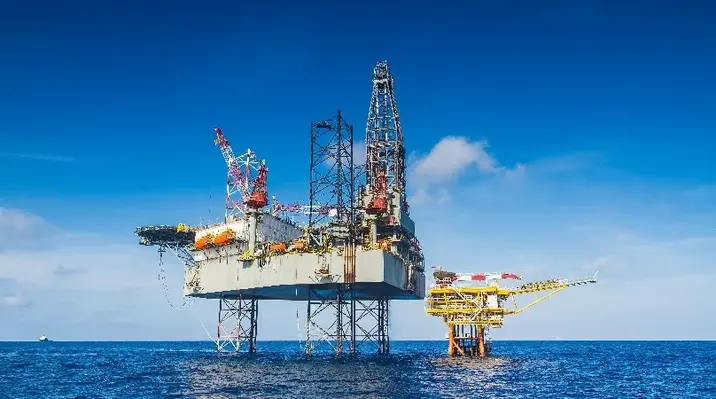
 In yet another move to roll back Biden-era legislation, The U.S. Department of the Interior (DOI) has announced it intends to revise the Bureau of Ocean Energy Management’s 2024 Risk Management and Financial Assurance for OCS Lease and Grant Obligations Rule.
In yet another move to roll back Biden-era legislation, The U.S. Department of the Interior (DOI) has announced it intends to revise the Bureau of Ocean Energy Management’s 2024 Risk Management and Financial Assurance for OCS Lease and Grant Obligations Rule.
The rule increased the financial assurance requirements for offshore operators to ensure they meet their decommissioning obligations and was designed to “better protect the taxpayer from potentially bearing the cost of facility decommissioning and other financial risks associated with OCS development, such as environmental remediation.”
This rule was challenged by the Republican-led states of Louisiana, Mississippi and Texas and oil and gas industry groups, who argued that it would result in "potentially existential consequences" for small and medium-sized companies, although a federal judge earlier this year rejected their bid to block the rule. According to the DOI this rule was estimated to increase financial assurance requirements for offshore oil and gas operators by US$6.9bn in additional bonding, costing businesses an additional US$665mn in premiums each year.
The Trump administration intends to develop a new rule that will supposedly cut costs and red tape and free up billions of dollars for American producers to use to explore and produce oil and gas in the Gulf of America while protecting American taxpayers against high-risk decommissioning liabilities, according to the DOI statement.
“This revision will enable our nation’s energy producers to redirect their capital toward future leasing, exploration, and production all while financially protecting the American taxpayer,” said DOI Secretary Doug Burgum. “Cutting red tape will level the playing field and allow American companies to make investments that strengthen domestic energy security and benefit the Gulf of America states and their communities.”
The Department expects to finalise the rule this year, and will welcome public comments on the proposal.
The Bureau of Ocean Energy Management will continue to require all operators on the Outer Continental Shelf to provide financial assurance for their decommissioning obligations.
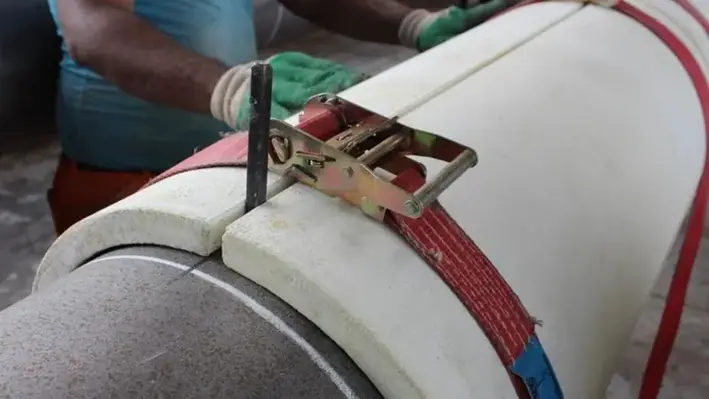
 In a contract with Shell Offshore, innovative solutions provider, CRP Subsea, will be supplying crushable foam wrap (CFW) for the Whale deepwater development situated 200 miles south of Houston in the Gulf of America
In a contract with Shell Offshore, innovative solutions provider, CRP Subsea, will be supplying crushable foam wrap (CFW) for the Whale deepwater development situated 200 miles south of Houston in the Gulf of America
The contract covers one well-set to be delivered by Q3 2025, followed further by the generation of four additional well-sets over the year. Each well-set are made of 1,798 CFW quadrants, each one metre in length. Other components include installation equipment, such as adhesive (one tube per two quadrants), adhesive dispensing guns, tie wraps, and Spanset straps.
An engineered syntactic foam, CFW comprises of a thermoset resin and hollow glass microspheres (HGMS). Once installed around the inner drill casing, it is immersed in the annulus fluid. As pressure within the annulus increases, the CFW will collapse at a pre-determined pressure and temperature combination, as dictated by well conditions. This controlled collapse allows for the expansion of annulus fluid, dispersing potentially destructive pressure build-up.
Andy Smith, Head of Sales, said, "It’s fantastic that Shell has chosen us to support this exciting deepwater project. We’ve been manufacturing and deploying crushable foam wrap for decades, helping to protect wells around the world. This contract is a great validation of our team’s expertise and dedication to delivering high-quality solutions for the industry."
The CFW will be produced at the company's Skelmersdale facility, once project engineering begins shortly.
Click here to know more about Offshore Network's well intervention conferences.

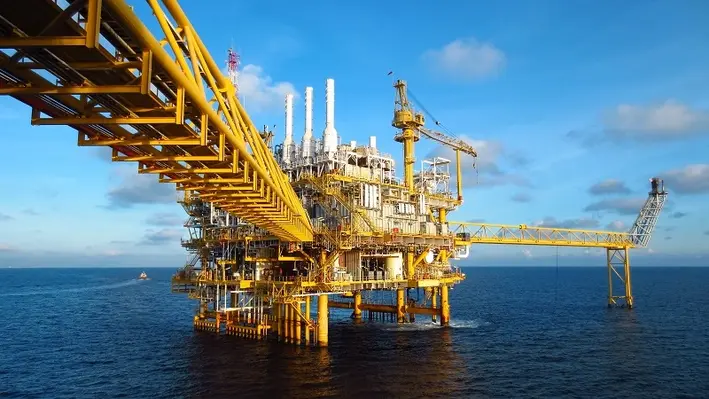 One of the Gulf of Mexico’s leading late-life decommissioning specialist, Promethean Energy, has completed the decommissioning of offshore orphaned wells in the Matagorda Island lease area.
One of the Gulf of Mexico’s leading late-life decommissioning specialist, Promethean Energy, has completed the decommissioning of offshore orphaned wells in the Matagorda Island lease area.
Steve Louis, SVP of Decommissioning at Promethean, said, “Our team is incredibly proud to have completed this critical work efficiently, safely and ahead of budget. By integrating our expertise, technologies and strategic partnerships, we have demonstrated that decommissioning can be both cost-effective and environmentally responsible.”
The project began with drone inspections, safety preparations and detailed well diagnostics, leading to the lower and upper P&A of the wells. Promethean’s approach aligns with its commitment to leveraging cutting-edge technology to ensure safe and responsible end-of-life asset management.
Clint Boman, Senior Vice President of Operations, commented, “We are advancing standards at Matagorda Island and providing a replicable model for similar projects worldwide. Our focus is – and always will be – raising standards for safety, efficiency and innovation in decommissioning across our industry. For example, we implemented visual intelligence tools to manage safety risks associated with ageing offshore infrastructure addressing a long-standing industry challenge.”
Ernest Hui, Chief Strategy Officer of Promethean Energy, concluded, “Building on our strong execution performance, our strategy is to continue identifying synergies with other asset owners, fostering collaboration, and developing sustainable decommissioning campaigns that drive efficiency across the industry."
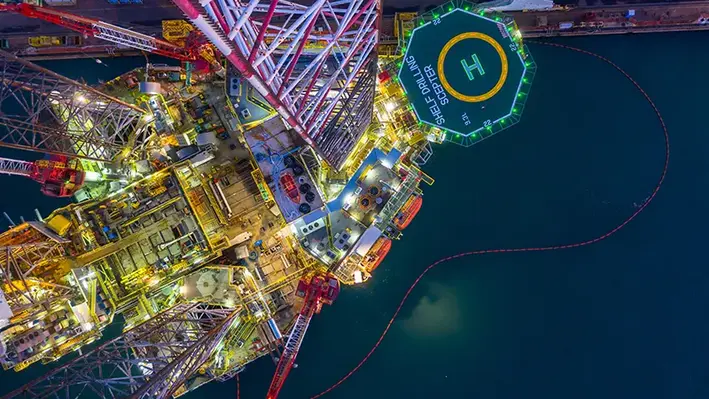
 Inching closer towards its goals to hit 300,000 net barrels per day of oil equivalent from the Gulf in 2026, Chevron Corporation has started production from the Ballymore subsea tieback in the deepwater Gulf of America.
Inching closer towards its goals to hit 300,000 net barrels per day of oil equivalent from the Gulf in 2026, Chevron Corporation has started production from the Ballymore subsea tieback in the deepwater Gulf of America.
The latest in a series of Chevron projects to start up last year, the company expects to produce up to 75,000 gross barrels of oil per day through three wells tied back three miles to the existing Chevron-operated Blind Faith facility.
“Ballymore is an example of how we are leveraging technology and driving efficiencies to help produce affordable, reliable energy from the deepwater Gulf of America, one of the lowest carbon intensity oil and gas producing basins in the world,” said Brent Gros, Vice President, Chevron Gulf of America. “Ballymore, which was completed on time and on budget, brings additional production online without building a new standalone offshore platform. This reduces our development costs and is expected to drive higher returns for shareholders.”
A prominent leaseholder in the Gulf, Chevron is keen on exploring further growth opportunities in the basin. Since last year, the company has started production from its industry-first Anchor project and non-operated Whale project and has been prioritising water injection to boost output at its operated Tahiti and Jack/St. Malo facilities.
Estimated potentially recoverable resources at Ballymore are 150 mn barrels of oil equivalent gross over the life of the project. Ballymore is located in the Mississippi Canyon area in around 6,600 feet (2,000 m) of water, about 160 miles (260 km) southeast of New Orleans. The development is Chevron’s first in the Norphlet trend of the Gulf.
The major's subsidiary Chevron USA Inc is operator of the Ballymore project with 60% working interest, along with TotalEnergies E&P USA, Inc who owns 40% working interest.

 Decom Engineering, subsea cutting specialist and provider of green decommissioning solutions, continues to expand globally, winning contracts for its subsea cutting solutions in the Gulf of Mexico and elsewhere.
Decom Engineering, subsea cutting specialist and provider of green decommissioning solutions, continues to expand globally, winning contracts for its subsea cutting solutions in the Gulf of Mexico and elsewhere.
The company won contracts v.alued at more than £2 million (US$2.7 million) in the first quarter of 2025, including a chain cutting scope in the Gulf of Mexico in which it will deploy its new ultra-light and neutrally buoyant C1-16 chopsaw to cut studless mooring chains.
Offshore Brazil a 300-day campaign will see two C1-16 chopsaws cutting multiple link mooring chains of up to 142mm diameter, while a project due to start offshore Nigeria will involve tender cutting and flexible riser cutting scopes.
Decom Engineering’s range of cold cuttings Chopsaws can perform “clean cuts” through 2-46” materials and which can operate in the harshest working conditions, including subsea. The cutting saws are a cost-effective, snag-free alternative to diamond wire saws and hydraulic shears, and can be deployed on pipes, drill pipe, conductors, umbilicals, chains, wire rope and more.
Decom recognised the need to devise neutrally buoyant integration for its cutting tools when it was last year commissioned to assist with the removal of 30” conductors - with flexible risers inside - on the Brent Charlie platform in the UKCS. Due to the seabed conductor layout and restricted 3 metre width access, Decom’s C1-32 chopsaw had to be neutrally buoyant in seawater and easily manoeuvreable with a single ROV. Weighing approximately 6,700kg in air but only 50kg in seawater and with a blade diameter of 2,100mm, the C1-32 assisted with the cutting of 40 multi-string conductors, many with the added challenge of loose internal strings.
Decom Engineering commercial director Nick McNally said, “By analysing past campaigns in challenging environments including the Indian Ocean and the North Sea, we have fine-tuned our designs to perform seamlessly in extreme conditions.
“The development and integration of enhanced blade technology such as replaceable tips, custom deployment frames, and increased operational flexibility ensures that our tools are equipped to handle even the most demanding offshore operations with precision and reliability.
“On several projects we have been asked to assist on structural removal scopes after other cutting technologies have proven not to be capable, and this contingency role is now moving Decom into a position where we are becoming the first choice on larger and more complex scopes.”
Other solutions offered by Decom include a pipe coating removal machine which it says is the fastest and greenest process on the market. The cold process is capable of removing multiple coating types from decommissioned or surplus pipelines. The pipelines can then be repurposed and deployed in a number of sectors, for example piling and construction, which returns value to the client while decreasing the carbon footprint compared to using new steel.

 Addressing a challenging deepwater permanent abandonment operation in the Gulf of America (GOA), Oilfield Service Professionals (OSP), along with Lee Energy Systems (LES), initiated the PerfPro Perf & Squeeze method to overcome the limitations that arise out of mechanical blowout preventer (BOP), posing an obstacle to conventional cut-and-pull operations for the 14.15” casing string. In case explosive perforative guns needed deployment, a lot of uncertainty centred marred casing centralisation, giving rise to potential risks of unintentional perforation across multiple casing strings.
Addressing a challenging deepwater permanent abandonment operation in the Gulf of America (GOA), Oilfield Service Professionals (OSP), along with Lee Energy Systems (LES), initiated the PerfPro Perf & Squeeze method to overcome the limitations that arise out of mechanical blowout preventer (BOP), posing an obstacle to conventional cut-and-pull operations for the 14.15” casing string. In case explosive perforative guns needed deployment, a lot of uncertainty centred marred casing centralisation, giving rise to potential risks of unintentional perforation across multiple casing strings.
There were also other challenges concerning high-risk lower marine riser package (LMRP) interventions, which could introduce debris into the well, leading to costly extended work scopes.
The Bureau of Safety and Environmental Enforcement-approved PerfPro Perf & Squeeze method offered an innovative low-risk solution to these challenges. The single-trip Perf & Squeeze method was implement by OSP and LES to leverage its safer, faster, and cost-effective alternative to conventional approaches. The package comprised NEXUS High-Pressure/High-Tensile Packer, Gator Perforator, CatchPro Dart/Ball Catcher, and BarrierPro Hydra-Set Bridge Plug with Scraper System.
The PerfPro Perf & Squeeze method altogether eliminated the need for LMRP intervention, leaving the potential well debris issues out of the question. Without the rig, more than 24 hours were saved in terms of downtime. The method provides assurance against explosive perforating guns to avoid unknown casing centralisation. It ensures access to the 14" x 22” annulus above the 16” TOL, enabling placement and verification of two critical zonal isolation barriers. It executed rapid planning, testing, and deployment, including a pre-job perforation test on 14.15” casing to confirm operational feasibility.
The PerfPro Perf & Squeeze approach saved operators more than US$1mn in operational cost savings while enhancing safety and efficiency . It has the potential to redefine primary P&A approaches.
To know more about the global well intervention scene, click here.
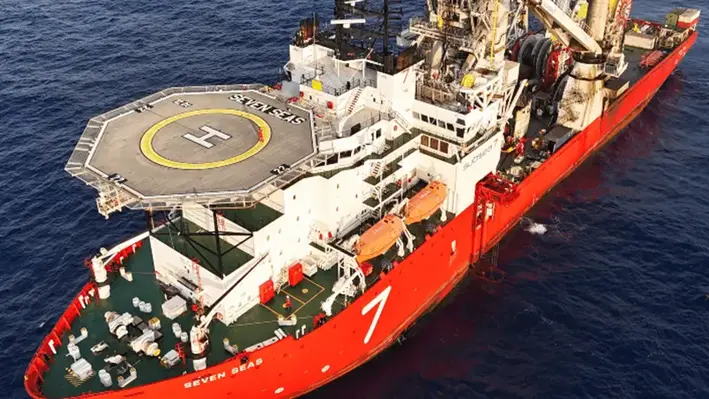
 The Sparta deepwater development in the United States will be spearheaded by Subsea7 as the project's operator Shell Offshore Inc onboarded the subsea engineering and construction company for a sizeable contract, ranging somewhere between US$50-150mn.
The Sparta deepwater development in the United States will be spearheaded by Subsea7 as the project's operator Shell Offshore Inc onboarded the subsea engineering and construction company for a sizeable contract, ranging somewhere between US$50-150mn.
The contract mandates Subsea7 to oversee the transportation and installation of a floating production system (FPS) at Garden Banks block 959, which is located off the southeastern coast of Louisiana at water depths of up to 1,635 metres. The company's team have initiated project management and engineering activities from its office in Houston, Texas, aiming to start offshore operations in 2027.
Craig Broussard, Senior Vice President for Subsea7 Gulf of Mexico, said, “We are proud to continue our collaboration with Shell in the US, building on past projects, including the recent Vito development. We look forward to playing a key role in the successful delivery of the Sparta project.”
Partners involved in the Sparta project has conducted studies to find an estimated, discovered recoverable resource volume of 244 mn barrel of oil equivalent (boe), and is aiming to extract as much as 90,000 boepd. It is Shell’s 15th deep-water host in the Gulf of Mexico. Speaking of the project, the company's Integrated Gas & Upstream Director, Zoe Yujnovich said it "demonstrates the power of replication, driving greater value from our advantaged positions”. It is “aligned with our commitment to pursue the most energy-efficient and competitive projects while supplying safe, secure energy supplies today and for decades to come”.
To know more about Offshore Network's global well lifecycle conferences, click here.
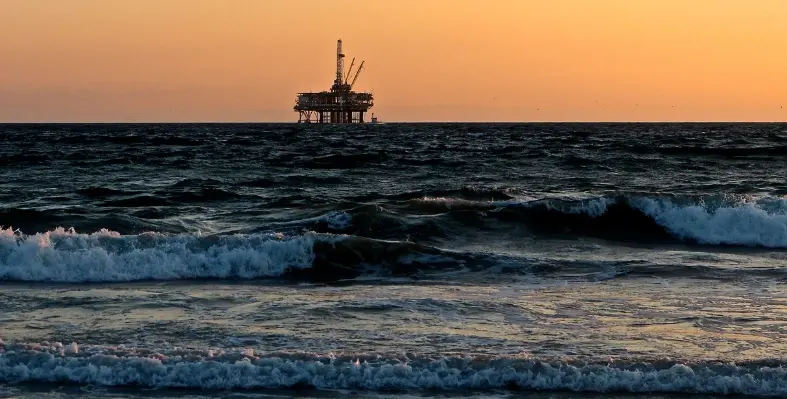

A US federal judge struck down a vast lease sale for drilling rights in the Gulf of America, casting doubt over future oil well interventions in the region.
According to various news reports, the judge ruled that Lease Sale 261, held by the Biden Administration, violated environmental regulations, halting activities across more than 283,280 sq km of federal waters.
Organised by the Bureau of Ocean Energy Management (BOEM), the sale had auctioned off approximately 6,475 sq km for US$261.7mn.
The oil and gas lease sale was located in Gulf waters off the coast of Louisiana, and could threaten the survival of the endangered Rice’s whale species, according to environmental groups.
Statistics have placed the number of whales to just below 100 individuals.
Companies such as Chevron, ExxonMobil, and Shell secured leases aimed at boosting production in the Gulf, which supplies 14% of US crude oil, according to the US Energy Information Administration. However, environmental organisations, including Earthjustice and Sierra Club, challenged the sale, claiming it disregarded climate change consequences and risks to the endangered Rice’s whale.
The judge's decision hinged on the National Environmental Policy Act, finding that BOEM failed to properly evaluate the greenhouse gas emissions tied to future oil and gas output. The judge highlighted potential dangers from vessel strikes and noise pollution caused by drilling, deeming BOEM’s environmental analysis inadequate.
The ruling disrupts plans for oil well interventions and new subsea developments. Those projects are now in jeopardy, with the industry awaiting a resolution that could involve a revised review or cancellation of the leases entirely.
Associated Press added that The American Petroleum Institute, or API, an oil and gas trade association representing more than 600 firms and a party to the Gulf Coast case, said it is evaluating its options after this week’s ruling.
Negotiations to determine next steps are underway, but the immediate impact is clear, as billions in investments and planned interventions in the Gulf hang in the balance, leaving operators scrambling to adapt.
As the legal wrangle continues, the ruling underscores the growing tension between energy demands and environmental protection, with the Gulf of America at the centre of the debate.
Page 5 of 22
Copyright © 2025 Offshore Network